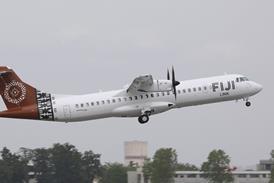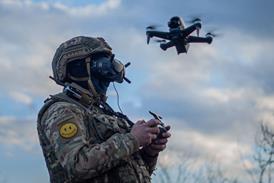US manufacturer's Center for innovation will get to grips with new techniques
Lockheed Martin is starting to measure the value of network-centric operations following the recent opening of a new Center for Innovation in Suffolk, Virginia. Initiatives already under way in the collaborative laboratory cover command and control, force application, focused logistics and homeland defence.
The centre provides modelling, simulation and visualisation tools to enable engineers to prototype network-centric systems and analyse alternative approaches. "We need to get to grips with how you measure the value of network-centric operations, and compare different options on the basis of outcomes," says Jon Armstrong, director net-centric integration.
The laboratory is connected by Lockheed's Global Vision high-bandwidth network to 27 nodes at 18 sites, but is designed to bring engineers from across the company together in one location designed to foster creativity. "This is a nexus for horizontal integration," says Buck Marr, centre vice-president, who adds that there are already 100 programmes in place.
Initiatives are housed in six reconfigurable sectors. The force application initiative is experimenting with joint force projection, including global strike, and is preparing to work on prompt global reach, dynamic retargeting, and loitering cruise missiles. "In the future we will look at sea basing and unmanned systems," says Mort Forker, director, force application.
Two fighter cockpits representing the Lockheed/Boeing F/A-22 and Lockheed's F-35 Joint Strike Fighter will be installed later this year and linked to a testbed for the US Department of Defense global information grid (GIG) that resides in the net-centric operations sector.
Focused on command and control, the net-centric sector includes representations of a joint force headquarters, intelligence cell, forward-deployed coalition air operations centre, small-ship command centre and fighter cockpit, all connected via the GIG testbed.
The net-centric operation sector also generates real-time simulations run by other sectors. The centre, meanwhile, is using network simulations to develop architectures that combine homeland defence with homeland security, including missile defence. One technology being evaluated is passive coherent location – tracking aircraft via FM radio station transmissions – says Dave Kier, vice-president, protection.
GRAHAM WARWICK/WASHINGTON DC
Source: Flight International























